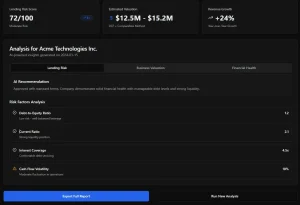Let’s be honest—climate change isn’t just knocking on the door anymore. It’s moved in. And while governments and corporations scramble for solutions, individuals and small businesses are stepping up too. The catch? Eco-friendly projects—solar panels, energy-efficient buildings, sustainable agriculture—often come with hefty price tags. That’s where green loans and sustainable financing swoop in like financial superheroes.
What Exactly Are Green Loans?
Think of green loans as regular loans… but with a conscience. They’re specifically designed to fund projects that benefit the environment—whether that’s installing solar panels, retrofitting a building for energy efficiency, or launching an organic farm. The best part? They often come with perks like lower interest rates or flexible repayment terms.
Types of Green Financing
Not all green financing is created equal. Here’s a quick breakdown:
- Green Personal Loans – For homeowners or individuals funding smaller projects (e.g., solar water heaters).
- Commercial Green Loans – Tailored for businesses investing in sustainability (e.g., LEED-certified office spaces).
- Green Bonds – Large-scale debt securities issued by corporations or governments to fund eco-initiatives.
- Energy-Efficiency Mortgages (EEMs) – Home loans that include financing for energy-saving upgrades.
Why Go Green (Financially)?
Sure, saving the planet feels good. But green loans offer tangible benefits too:
| Benefit | How It Helps |
|---|---|
| Lower Interest Rates | Many lenders offer discounted rates for eco-projects—sometimes 0.5% to 2% lower than standard loans. |
| Tax Incentives | Governments often sweeten the deal with rebates or tax credits (hello, solar tax credit!). |
| Higher Property Value | Energy-efficient upgrades can boost resale value by up to 10%—according to some studies. |
And here’s the kicker: sustainable projects often pay for themselves over time. A solar panel system might take 5-7 years to break even, but after that? Pure savings.
The Fine Print: What Lenders Look For
Not every “eco-project” qualifies. Lenders usually require:
- Certification – Projects may need verification from groups like LEED or Energy Star.
- Clear ROI – Lenders love numbers. Show them projected energy savings or cost reductions.
- Repayment Plan – Like any loan, they’ll scrutinize your ability to pay it back.
Pro tip: Some lenders even offer free energy audits to help you pinpoint the most cost-effective upgrades.
Where to Find Green Loans
You’ve got options—from big banks to niche players:
- Banks & Credit Unions – Many now have dedicated green loan programs (check local institutions first—they’re often more flexible).
- Government Programs – The U.S. DOE’s Weatherization Assistance Program or the EU’s Green Deal are goldmines.
- Online Lenders – Platforms like GoodLeap specialize in solar financing.
The Future of Green Financing
Honestly? It’s looking bright. The global green bond market alone hit $2.5 trillion in 2023. And with climate regulations tightening, lenders are scrambling to offer more creative solutions—like “pay-as-you-save” models where loan payments align with energy savings.
That said… challenges remain. Smaller projects sometimes struggle to meet rigid certification standards. And in developing countries, access to green capital is still spotty. But the trend? Undeniably upward.
Final Thought: Money as a Tool for Change
Every dollar borrowed for a green project is a vote—for cleaner energy, smarter infrastructure, and a planet that might just stay livable. The financial world is finally catching on: sustainability isn’t just ethical… it’s good business.







More Stories
Loans for Niche Small Businesses: Finding Funding When Your Industry is Off the Beaten Path
Secured Vs Unsecured Loans – Choosing the Right Option for Your Needs
Wealth Management For High Net Worth Individuals